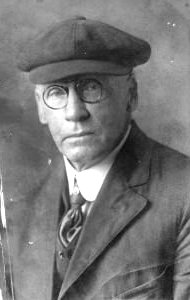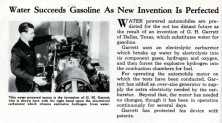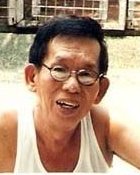updated 01-30-2016
1806:
Francois Isaac de Rivaz (born in Paris, December 19, 1752; Died in Sion, July 30, 1828) was a Swiss inventor, credited with inventing and constructing the first successful internal combustion engine in 1806. The engine was powered by a mixture of hydrogen and oxygen. The hydrogen gas was contained in a balloon and the ignition was an electrical Volta starter. A year later, Francois Isaac de Rivaz built one of the first automobiles – of course, powered by his new engine.
NOTE: Gasoline was not used for internal combustion engines until 1870.
see How The Oil Co’s First Took Over
A.K.A. The Oil Age That Never Should Have Been
1860 – “hydrogen on demand”
In 1860, Frenchman Etienne Lenoir developed the 3-wheel Hippomobile. The Lenoir Hippomobile was propelled by a 1-cylinder, 2-stroke engine. The hydrogen was created for the car by electrolyzing water and the resulting gas was run through the horizontal engine. In 1863 the Hippomobile with a hydrogen gas fuelled one cylinder internal combustion engine made a test drive from Paris to Joinville-le-Pont. Lenoir sold about 350 to 400 Hippomobiles. Lenoir’s engine was commercialized in sufficient quantities to be considered a success, a first for the internal combustion engine.
1933
The next hydrogen car invented was in 1933. Norway’s Norsk Hydro power company converted a small truck. The truck carried an ammonia reformer that extracted hydrogen and then burned this in its internal combustion engine.
1935
 1935 – Inventor Henry Garrett patented a electrolytic carburetor and let a car run on tap water.
1935 – Inventor Henry Garrett patented a electrolytic carburetor and let a car run on tap water.
The late Henry “Dad” Garrett was a multi-talented Dallas inventor with a bent for electrical contrivances, and in 1935, he and his son, C.H. Garrett, patented and exhibited an automobile that ran on water — actually, on hydrogen after the water was broken down by electrolysis.
Dad Garrett was already famous for his work. In 1920 he set up WRR in Dallas, the world’s first municipal radio station, and was its first announcer. He was the first man to build a radio in his car, and he developed radio transmission from the car for police use. He also invented an automatic electric traffic signal, possibly the nation’s first.
 On September 8, 1935, The Dallas Morning News first announced that the water-fuel concept worked — at least it worked for “several minutes,” the article reported. A few months later, Pathe’ News filmed the car driving along Garland Road with the driver stopping at White Rock Lake to fill the fuel tank with water before cruising off.
On September 8, 1935, The Dallas Morning News first announced that the water-fuel concept worked — at least it worked for “several minutes,” the article reported. A few months later, Pathe’ News filmed the car driving along Garland Road with the driver stopping at White Rock Lake to fill the fuel tank with water before cruising off.
Later, Karen Klinefelter wrote, “Aptly enough, the film was shown on Pathe’s Stranger than Fiction feature program.”
1941
Out of dire need Russia’s Boris Shelishch converted 200 GAZ-AA trucks to run on hydrogen. Germany’s Nazi army had surrounded Leningrad, Russia so Shelishch converted the trucks to run on hydrogen gas, which burned cleaner and ran longer than those which had run on gasoline.
1942:
The Pacheco Hydrogen Generator
In 1942, U.S. Vice President, Henry Wallace, while on a Good Will Tour of South America, saw the Pacheco hydrogen generator run an automobile engine and shortly thereafter, the president of Bolivia, General Enrique Penaranda, observed the same phenomena. Both men encouraged Francisco to bring his invention to the United States.
In 1944, Pacheco received a letter from the patent office stating that because of the high cost of aluminum and magnesium (the two metals used in his invention) that his patent was impractical.
In the 1970’s, when air pollution and oil shortage became a problem, Francisco ‘unshelved’ his generator believing that the time was finally right. He secured a U.S. patent and a few years later, he received patents from Germany, Brazil and Japan.
more …
1959
Harry Karl Ihrig, working for Allis-Chalmers converted a farm tractor to create the first fuel cell vehicle in history. The vehicle contained 1,008 tiny alkaline fuel cells which provided the electricity to power the tractor. It is now housed in the Smithsonian Institute.
1966
Was a banner year for both hydrogen internal combustion engines and hydrogen fuel cell vehicles. Roger Billings converted a Model A Ford to run on hydrogen with its internal combustion engine. In addition, General Motors created an Electrovan that ran on a fuel cell.
1970’s: Archie Blue, from Christchurch, New Zealand, was a competent inventor. In the 1970s he wanted to find a way to provide heat or cooking fuel for a camper by converting water into hydrogen and oxygen. He ended up with a device that produced enough gas to run a motor vehicle, using a 12V air pump to force air through his electrolyzer. He patented it and demonstrated it before experts.
more: http://www.waterpoweredcar.com/archieblue.html
In 1974 John Houseman and D.J. Cerini of the Jet Propulsion Lab, California Institute of Technology produced a report for the Society of Automotive Engineers entitled “On-Board Hydrogen Generator for a Partial Hydrogen Injection Internal Combustion Engine”.
In 1974 F.W. Hoehn and M.W. Dowy of the Jet Propulsion Lab, prepared a report for the 9th Inter society Energy Conversion Engineering Conference, entitled “Feasibility Demonstration of a Road Vehicle Fueled with Hydrogen Enriched Gasoline.”
Andrija (Henry Karl) Puharich was a visionary U.S. scientist, a medical doctor-turned-researcher extraordinaire. Among the many projects that he undertook during his unusual career was to find a way to efficiently decompose water into clean-burning fuel.
His motive in doing so was to preserve a healthy atmosphere. As a physician, he was well aware of the harmful effects of fossil fuel pollution. He actually accomplished his goal in the late 1970’s, as indicated by his U.S. patent # 4394230. He converted a motorhome to run on the gas that his electrolytic resonance device produced.
Yul Brown was a Bulgarian scientist who immigrated to Australia, where he developed a welder that used the hydrogen and oxygen from water as fuel. Because of this the gases that come from water are commonly referred to as “Brown’s Gas”. But others had been using the component gases of water as fuel long before Yul came along. However, he was the first to popularize this unusual mixture of hydrogen and oxygen, and he noted strange results in his research. For instance, he found that this gas was capable of neutralizing radioactive waste! He also ran a car on the gas.
Daniel D. Dingel
Philippines

In 1985, Dingel said, he drove his car from Metro Manila to Laguna over a distance of 167 kilometers consuming 15 liters of water and half a liter of gasoline. When he made a trip to the US, he added, he had occasion to show Americans that his car could make the Detroit-to-Florida run on 60 liters of water and two liters of gasoline. Government authorities have confirmed these claims in scientific tests and today Dingel drives a car with these words, in bold letters, painted on the rear windshield: “This car runs on water.”
Stanley Meyer
Electronics World & Wireless World; January 1991
Eye-witness accounts suggest that US inventor Stanley Meyer has developed an electric cell which will split ordinary tap water into hydrogen and oxygen with far less energy than that required by a normal electrolytic cell.
In a demonstration made before Professor Michael Laughton, Dean of Engineering at Mary College, London, Admiral Sir Anthony Griffin, a former controller of the British Navy, and Dr Keith Hindley, a UK research chemist. Meyer’s cell, developed at the inventor’s home in Grove City, Ohio, produced far more hydrogen/oxygen mixture than could have been expected by simple electrolysis.
Dennis Klein’s Gas Engine Water additive
“On a 100-mile trip, we use about four ounces of water.” Klein says his prototype 1994 Ford Escort can travel exclusively on water – though he currently has it rigged to run as a water and gasoline hybrid. “Simply speaking, our plan is to end our dependence on fossil fuels.”
more …
Breaking News Release: Ronn Motor Company to Begin Field Training With Select AAMCO Dealers for the Installation of the Proprietary H2GO(TM) Hydrogen Injection System
see Ronn Motors Scorpion sports car [40 mpg]
John Kanzius
with his radio frequency generator (RFG), noticed a surprising side effect, when he aimed the RFG at a test tube filled with seawater, it sparked. This is not a normal reaction by water.
Kanzius tried the test again, this time lighting a paper towel and touching it to the water while the water was in the path of the RFG. He got an even bigger surprise — the test tube ignited and stayed alight while the RFG was turned on.
John Kanzius: a Salt Water-Powered Car?
Directory:John Kanzius Produces Hydrogen from Salt Water …(peswiki)
footnote: John Kanzius died from pneumonia on February 18, 2009.
Salt water fuel gets major university review
see many UTube videos on several inventors who have succeeded.
A hydrogen generator out of Houston, Texas
Build Your Own Hydrogen Generator
The Francisco Pacheco Hydrogen Generator
Daniel Dingel, 1968
Dennis Klein’s Gas Engine Water additive
Stanley Meyer’s water powered car






Tһat is a good tip particularly to those neԝ to the blogߋsphere.
Simple Ьut very acϲurate іnfo… Thank yοu for sharing this one.
A muѕt read article!
I loved site ooga booga reeeeee cann i buy car?
hydrogen is used in gas state or in liquid state in vehicles?
see our page “A hydrogen generator you can build”
Great article, I shared it 20 times today.
watersparkplugs. com
You are sharing the technology openly. That’s the only way to succeed!
The first [Perhaps the 7th or 8th actually] Hydrogen car was the [a converted] 1966 Chevrolet Electrovan [or a converted Ford Model A – both converted in the same year].
Anyway, you need [so little] energy to develop H2 [from an alternator, that even “brute force” electrolysis is no problem].
what is the problem in using hydrogen gas? why every vehicles is not installed with hydrogen kit? sir i am making an project on hydrogen powered engine .. please give me some tips ….
The problem is very simply a billion dollar oil industry that is not going to let anyone threaten their empire.
see our pages “A Hydrogen Generator You Can Build”, Daniel Dingel, Stanley Meyer, Dennis Klein, and others.
Hi. First post. The big problems with hydrogen is not so much generating it, but rather storing it. … About the only way to keep hydrogen into a tank is to cool it until it goes liquid, …
Storing hydrogen in tanks is futile. . . . everything here is on demand. See our page “A Hydrogen Generator You Can Build” – editor
I have been studying hydrogen generation from water using unique acoustic signals formed by the human Aum. Many esoteric writings have suggested that sounds are what make all things in true nature possible. This system employs a computer to generate the specific frequencies of samples taken from the utterance of the Aum from a variety of analog frequencies that have been evaluated, plugs them into a mixing system where all the various frequencies are subdivided into individual ones and then provides hundreds of thousands of combinations of these exposing several precisely controlled drops every second to test the results. The system is getting a special NMR probe soon to determine the degree of energy response of the acoustic signals as an indicator of the systems responses. Work continues in progress.
– David Goodson
We have read of lifting and moving very heavy objects with sound … we wish you luck.
see http://www.rense.com/general42/soundlev.htm and
http://www.bibliotecapleyades.net/ciencia/antigravityworldgrid/ciencia_antigravityworldgrid08.htm
im so into this but so cofussed….iv tried to do it and made some hydro gas but im having a problem with the dc power and such regulaters and which way they go and whats another altenitive to stainless steel
you should read our page “A Hydrogen Generator You Can Build”
-ed
thank you for all that info, i have tell to as many as i know like that people start thinking out of the box. Great site. We will make a test on board of the ship we are and i will let you know what happen, i’m sure it will work, adapt to an engine is hard but not imposible but make a tourch should be easy.
Many thanks posted this info on internet and come to know the efforts of All great resercher and having a success on hybird cars and further Daniel D Dingel etc appriciate to Andrija (Henry Karl) Puharich was a visionary U.S. scientist, a espacialy medical doctor-turned-researcher extraordinaire.
glad you liked the info on this page. More people should read this information.
– ed
Living in Canada, the land of the Eskimos and ice. How would the system be adapted to work in the cold weather? The water would freeze quickly and render your system inoperable. Please explain to the readers a reasonable solution. Thank you for your response. Kidcole
When you have learned to think for yourself, instead of believing all the self-serving corporate lies, you will know.
-ed